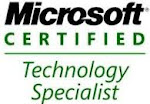Shredded storage, one of the new feature in SharePoint 2013. In SharePoint, documents can be stored in a library and will be
saved in Content DB as BLOB (Binary Large Objects). RBS is a set of API that
gives us option to move BLOB out of SQL server content DB.
In SP 2010, BLOB allows us to improve storage performance.
If we have enabled the version history, each version of the document can be
saved in BLOB. That means, each new version will create a new document in DB. If
we are working with 10 MB document, for 10 versions it will take 100 MB
storage. If we change the metadata of the document, a new version will be
created. So user changes any metadata of the document, a new version will be
created in BLOB storage without changing anything in the document. There is
unnecessary of document read when we change/upload the office documents in
SharePoint 2010.
SharePoint shredded storage makes BLOB in to chunks by using
the number of shreds. So BLOB will be divided in to large number of shreds. By
using Shredded storage architecture we change the document, only the
differences will be saved. Suppose we have a versioning enabled a
document library and user changes the document, only changed shreds are
added in to the storage point. Shreds will associate with the previous entries
instead of creating new. By using shredded storage method, instead of using 100
MB in the above example we can just use 20-25MB of storage. It also reduces the
amount of information that a file to be retrieved by the web server from DB
that results efficiency in Input and Output.
By default shredded storage is enabled. We can enable or
disable the shredded storage at web application level or site level. We can
enable the shredded storage by using web service, FileOperationSettings
property of the web application. We have three options for the shredded
storage, UseWebSetting, AlwaysDirectToShredded, NeverDirectToShredded. Shredded
storage is independent from RBS. We can use RBS with or without using shredded
storage.










